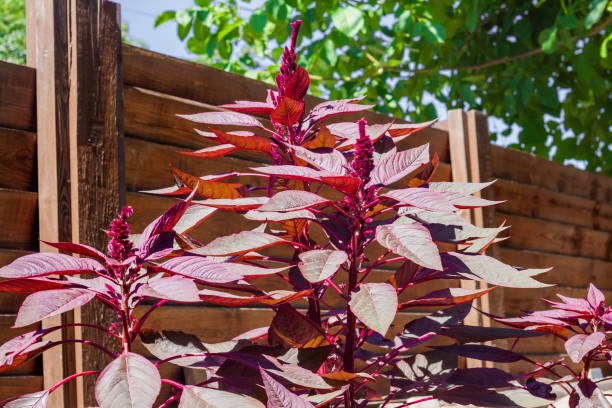Red amaranth (Amaranthus tricolor), also known as Chinese spinach or callaloo, is a vibrant, nutrient-rich leafy green that adds both beauty and nutrition to your rooftop garden. Known for its striking red leaves, this plant is easy to grow and thrives in warm climates. Here’s a comprehensive guide to growing red amaranth leaves on your rooftop.
Benefits of Growing Red Amaranth
- Nutrient-Rich: High in vitamins A, C, K, and minerals like calcium and iron.
- Heat Tolerant: Grows well in hot, sunny conditions.
- Fast Growing: Can be harvested within a few weeks of planting.
- Versatile: Edible leaves and seeds can be used in various culinary dishes.
Preparing Your Rooftop Garden
- Assess the Space:
- Ensure your rooftop can support the weight of the soil, plants, and containers.
- Confirm adequate sunlight; red amaranth requires at least 6-8 hours of direct sunlight daily.
- Select Containers:
- Use pots or planters with good drainage. Raised beds can also be effective.
- Ensure containers are at least 12 inches deep to accommodate the root system.
- Soil Preparation:
- Use well-draining, nutrient-rich potting soil.
- Incorporate organic compost or aged manure to improve soil fertility.
Planting Red Amaranth
- Sourcing Seeds:
- Obtain seeds from a reliable source. Varieties include ‘Red Leaf’ or ‘Red Callaloo.’
- Sowing Seeds:
- Sow seeds directly into containers after the last frost date when the temperature consistently stays above 60°F.
- Scatter seeds evenly over the soil surface and lightly cover with a thin layer of soil or compost.
- Germination:
- Keep the soil consistently moist but not waterlogged.
- Seeds should germinate within 3-10 days, depending on temperature and conditions.
Caring for Red Amaranth
- Watering:
- Water regularly to keep the soil moist but not waterlogged.
- In hot, dry conditions, you may need to water daily.
- Feeding:
- Fertilize with a balanced, water-soluble fertilizer every 4-6 weeks during the growing season.
- Alternatively, use organic options like compost tea or fish emulsion.
- Thinning:
- Thin seedlings to about 6-12 inches apart once they are a few inches tall. This spacing allows for better air circulation and growth.
- Pest and Disease Management:
- Monitor for common pests like aphids, flea beetles, and leaf miners. Use insecticidal soap or neem oil if necessary.
- Ensure good air circulation to prevent fungal diseases. Remove any infected leaves promptly.

Harvesting and Usage
- Harvesting:
- Start harvesting leaves when the plant is about 6 inches tall.
- Pick the outer leaves first, allowing the inner leaves to continue growing.
- Regular harvesting encourages new growth and prolongs the harvest period.
- Using Red Amaranth:
- Use fresh leaves in salads, stir-fries, and soups.
- Leaves can also be steamed, sautéed, or added to smoothies.
- Seeds can be harvested later in the season and used similarly to grains.
Tips for Success
- Heat and Sun: Red amaranth thrives in hot, sunny conditions, making it perfect for summer gardening.
- Continuous Harvest: Regularly harvesting leaves promotes more growth and extends the harvesting season.
- Companion Planting: Consider planting with other heat-loving vegetables like tomatoes, peppers, or eggplants.
By following these steps, you can successfully grow red amaranth in your rooftop garden, enjoying a continuous supply of nutritious and vibrant greens throughout the growing season. Happy gardening!


Leave A Comment